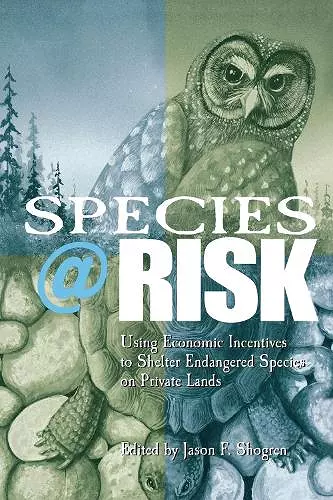Species at Risk
Using Economic Incentives to Shelter Endangered Species on Private Lands
Format:Paperback
Publisher:University of Texas Press
Published:15th Jan '05
Currently unavailable, and unfortunately no date known when it will be back

"This book presents the most comprehensive discussion of the economics and practicalities of incentive instruments that could be used for endangered and threatened species conservation. I believe the book will have broad appeal to lawyers, biologists, economists, and others working in the field of endangered species, as well as to general readers with an interest in conservation." -- J. B. Ruhl, Florida State University, author of The Law of Biodiversity and Ecosystem Management
In this book, lawyers, economists, political scientists, historians, and zoologists come together to assess the challenges and opportunities for using economic incentives as compensation for protecting species at risk on private property.
Protecting endangered species of animals and plants is a goal that almost everyone supports in principle—but in practice private landowners have often opposed the regulations of the Endangered Species Act, which, they argue, unfairly limits their right to profit from their property. To encourage private landowners to cooperate voluntarily in species conservation and to mitigate the economic burden of doing so, the government and nonprofit land trusts have created a number of incentive programs, including conservation easements, leases, habitat banking, habitat conservation planning, safe harbors, candidate conservation agreements, and the "no surprise" policy.
In this book, lawyers, economists, political scientists, historians, and zoologists come together to assess the challenges and opportunities for using economic incentives as compensation for protecting species at risk on private property. They examine current programs to see how well they are working and also offer ideas for how these programs could be more successful. Their ultimate goal is to better understand how economic incentive schemes can be made both more cost-effective and more socially acceptable, while respecting a wide range of views regarding opportunity costs, legal standing, biological effectiveness, moral appropriateness, and social context.
For those considering development of an incentive program, Species at Risk should be required reading. For others, it offers some clear perspective on what the next era of species-at-risk conservation in the United States could look like. * Great Plains Research *
ISBN: 9780292705975
Dimensions: unknown
Weight: 454g
283 pages